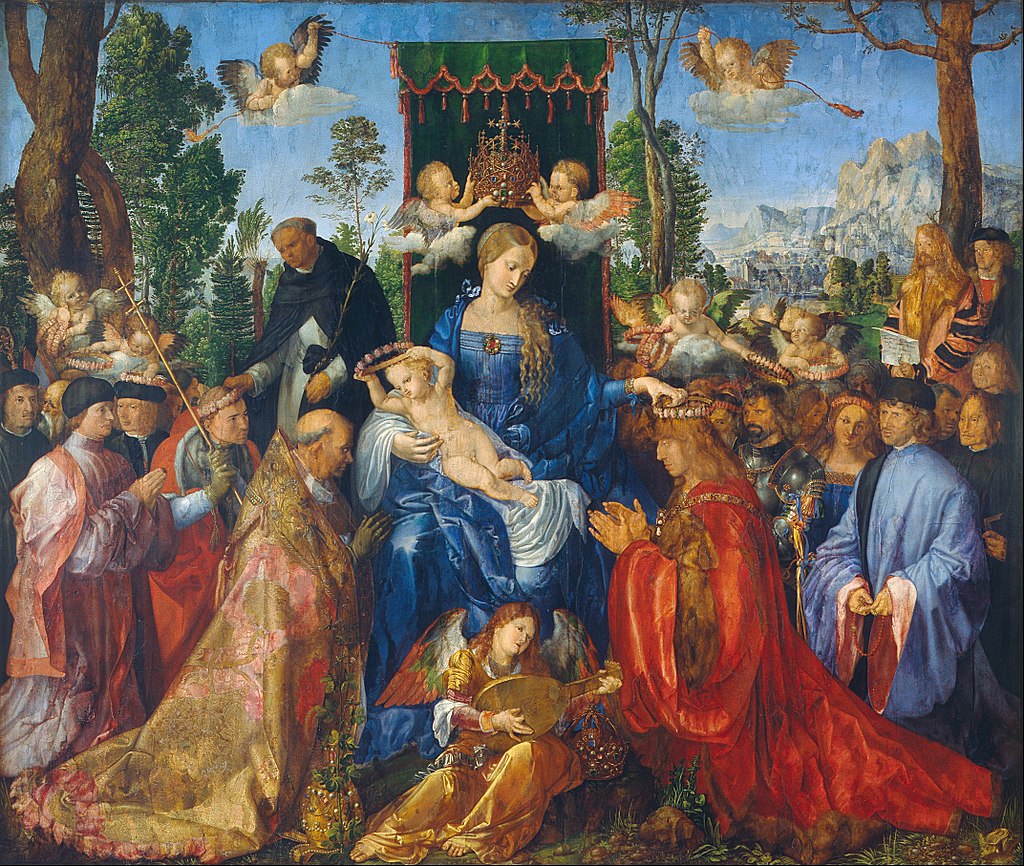A German Production: Albrecht Dürer, Feast of the Rose Garlands (1506)
Abstract
This painting, commissioned by the powerful Fugger family of Augsburg for the church of the German nation in Venice, depicts the celebration of the rosary. It portrays an enthroned Virgin Mary crowning the German emperor, Frederick III (though modelled after the future emperor Maximilian), with a rose garland, while several cherubim and St. Dominic crown surrounding worshippers with garlands at the same time. Dürer himself observes the scene from the background left. Painted by a Nuremberg artist, paid for by the most powerful German banking family, and intended for the German community abroad, the painting was very much the product of German labor and German resources and thus sheds light on various constellations of Germanness in the Early Modern period. The subject matter was characteristically German as well. The rosary was a late fifteenth-century invention and was promoted above all in the German territories. The pope kneeling across from Frederick III is Julius II, who confirmed the devotion with a papal bull in 1474. Finally, the background against which this exaltation unfolds is a northern one, with a German-looking town and a rough mountainous and forested landscape. After figuring so prominently in such a high-profile work of art, these elements continued to function as key markers of “Germanness” moving forward.
Source

Source: Albrecht Dürer, Feast of the Rose Garlands,1506, painting, oil on wood. Collection of Old Masters, National Gallery Prague – Kinsky Palace. Available online at: https://sbirky.ngprague.cz/dielo/CZE:NG.O_1552
National Gallery Prague – Kinsky Palace
Further Reading
Babette Bohn and James M. Saslow, eds., A Companion to Renaissance and Baroque Art. Chichester: Wiley-Blackwell, 2013.
Susie Nash, Northern Renaissance Art. Oxford and New York: Oxford University Press, 2008.
Larry Silver and Jeffrey Chipps Smith, eds., The Essential Dürer. Philadelphia: University of Pennsylvania Press, 2010.